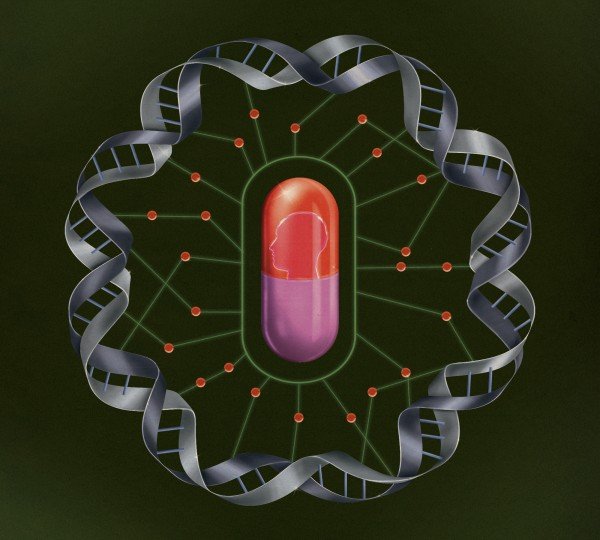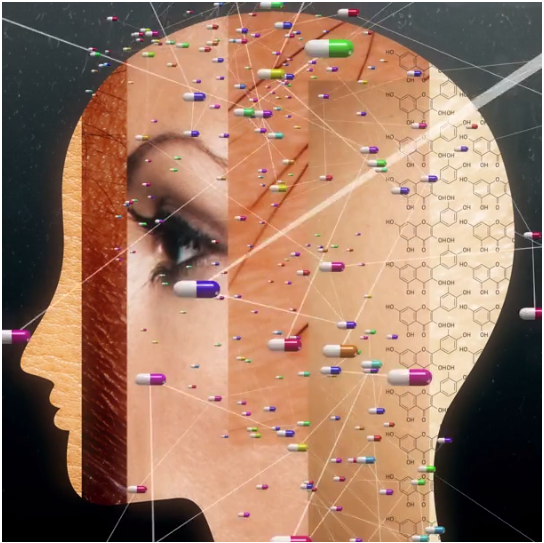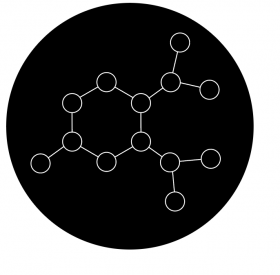Breakthrough technologies will change the way we live and work
Those are the outstanding technologies every year, voted by MIT Technology Review. MIT's voting criteria are not "instant noodles" technology, but breakthroughs that will really change the way we live and work in the future.
1. The Internet is absolutely confidential
A new kind of quantum-based Internet will be coming soon, ensuring secure communication. A team led by Stephanie Wehner, Delft University of Technology is building a network of quantum technologies to connect four cities in the Netherlands. Messages sent through this network cannot be hacked.
The Internet is based on quantum physics. Photo: YOSHI SODEOKA
Over the past few years, scientists have sought ways to transmit photons via fiber optic cable in a way that absolutely protects the information encoded in them. A team in China has used technology to build a 2,000-kilometer network backbone between Beijing and Shanghai, but that project depends in part on previous classical computer elements, occasionally breaking through. break quantum link without establishing a fully quantum link, so there is a risk of hacking.
In contrast, the Delft network will be the first place to communicate between cities using quantum techniques from start to finish. Technology is based on a quantum behavior of atomic particles called helices. Twisted photons cannot be eavesdropped without disrupting their content.
But it is very difficult to create torsion particles, and the transmission of information is still a challenge. Wehner's group has proven it can travel more than 1.5km (0.93 miles). They are confident they can establish a quantum link between the cities of Deft and the Hague by the end of this year. Ensuring uninterrupted connectivity over larger distances will require the need for quantum repeaters to expand the network.
"Such repeaters are now being designed at Delft and elsewhere," Wehner said, "the first steps to be completed in the next five to six years, are expected to be a global quantum network. complete by the end of this decade. "
2. Super personalized medicine
Super personalized drugs - novel drugs are being designed to treat genetic mutations.
Novel drugs are being designed to treat genetic mutations.
This is a definition of an utterly hopeless case: A child with an extremely rare illness with no treatment. Not even a single scientist studies them. Because it's "too rare to be concerned".
But that is about to change, thanks to new drug groups that can be adapted to a person's genes. If an extremely rare disease is caused by a specific DNA error, at least now they have a chance to fight to correct the genetic error.
One such rare case is Mila Makovec, a girl suffering from a very rare disease caused by a genetic mutation, but she finally has her own medication. Her case was published in the British Journal of Medicine in October, after doctors went from reading genetic errors to treating her within a year. They called it Milasen, based on her name.
Although the treatment did not completely cure Mila. But the medicine helped stabilize her condition: relieving the seizures and helping Mila start standing and walking with help.
In Mila's case, scientists have created a gene drug that has never been so fast and never had the opportunity to do so well. New drugs may be a form of gene replacement, gene repair, or antisense (the drug that Mila receives), helping to erase and correct false genetic information.
How many stories are like Mila's? So far, only a very few. But in the future will be more popular. Cases where scientists had to do nothing before now have found solutions through DNA analysis.
The real challenge for these treatments, however, is the clinical trial in which patients are whole trials - that they are struggling to overcome the previous conception of how to develop, test, and sell pharmaceuticals. Products. That is, who will pay for these drugs when they only help an individual but there is still no model of mass design and production?
3. Digital money
The rise in digital currencies creates a big ramification for personal finances.
Last June, Facebook unveiled a global digital currency, called Libra. This idea caused a backlash and Libra could never be started, at least not in the way it was originally envisioned. But it still made a difference: just a few days after Facebook's announcement, an official of the People's Bank of China implied that the bank could develop its own digital currency. Now China is ready to become the first major economy to release a version of its digital currency, which it intends to replace for cash.
Chinese leaders seem to see Libra, backed by a reserve that will be predominantly USD, as a threat: it could strengthen the disproportionate US power over the financial system. global, stems from the dollar has the role of the actual reserve currency of the world.
Now Facebook's Libra has become a geopolitical digital currency. In October, CEO Mark Zuckerberg promised Congress that Libra "will expand US financial leadership as well as democratic values and oversight around the world." The digital currency war has really begun.
4. Anti-aging drugs
The first wave of a new class of anti-aging drugs has begun to be put into human trials. These medications are unlikely to help you live longer, but it aims to treat specific diseases by slowing or reversing the basic aging process.
These drugs are called senolytics, and they work by removing certain cells as we age. Known as aging cells, they can create low-level inflammation, block normal cell repair mechanisms and create a toxic environment for nearby cells.
In June, San Francisco-based Unity Biotechnology, reported early results in patients with mild to severe knee degeneration. Results from a larger clinical trial are expected in the second half of 2020. The company is also developing similar drugs to treat age and lung-related diseases, among other conditions. other.
Senolytics are currently in human trials, along with a number of other promising methods targeting the biological processes at the root of aging and various diseases.
A company called Alkahest injects patients with components in the blood of young people and says it hopes to prevent cognitive and functional decline in patients with mild to moderate Alzheimer's disease. The company also has drugs for treating Parkinson's disease and dementia in human trials.
And in December, researchers at Drexel Medical University even tried to see if a cream, including immunosuppressant rapamycin, could slow aging in human skin.
Tests reflect researchers' growing efforts to find out if many diseases related to aging such as heart disease, arthritis, cancer and dementia may be hacked to delay. its onset or not.
5. Use AI to discover molecules
Scientists have used AI to discover promising drug-like compounds.
The universe of life-saving molecules is unbelievably large: researchers estimate the number to fall to about 1060, more than all the atoms in the solar system, providing chemistry. Nearly unlimited if chemists find the estimate.
Now machine learning tools can explore the large database of existing molecules and their properties, using information to create new possibilities. This can make it faster and cheaper to discover new candidates.
In September, a team of researchers at Hong Kong-based Insilico Medicine and the University of Toronto took a convincing step to show that this strategy works by summing up a number of drug candidates. found by AI algorithm.
Use techniques such as deep learning (solving problems related to artificial neural networks to upgrade technologies such as speech recognition, etc.) and a generation model similar to the one that enables computers defeating the world champion in Go's ancient game, the researchers identified about 30,000 new molecules with desired properties. They selected six molecules to synthesize and test. One is particularly positive and appears to be promising in animal experiments.
Chemists in drug discovery often dream about new molecules. This is an art skill honed by years of experience and, among the best, with a keen intuition. Now scientists have a new tool to broaden their imagination.
NEW TECHNOLOGY ELECTRONIC REPORT
Responsible agency: Union of Science and High-Tech Production and Telecommunications (HTI) - Vietnam Academy of Science and Technology
Editor in chief: Vo Tran
Operate and exploit advertising by iGetz Vietnam Media and Technology Joint Stock Company.
CONTACT
357A Nguyen Thi Dinh, TT. Tan Phu, Dong Nai.
Tel: (+84) 818.337.007/5 Fax: 818.337.007
Email: contact@gozon.xyz




